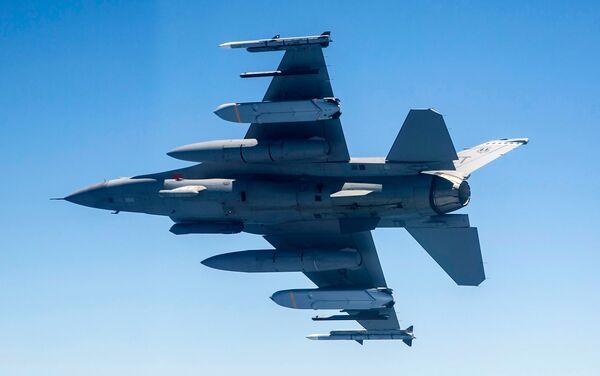
An Operational Flight Program M7.2+ standard F-16 undergoing pre-release flight trials. The USAF is to implement the upgrade to more than 600 of its F-16 aircraft, under the Post Block Integration Team programme. (US Air Force)
The US Air Force (USAF) has formally launched an upgrade programme for the majority of its fleet of Lockheed Martin F-16 Fighting Falcon combat aircraft that it is describing as the “largest modification work in history”.
Announced by the Air Force Life Cycle Management Center (AFLCMC) on 28 February, the Post Block Integration Team (PoBIT) effort will see hundreds of F-16s undergo wide ranging modifications designed to maintain their operational relevance in future.
“In one of the largest modernisation efforts in US Air Force history, 608 F-16s – comprised of Blocks 40[/42] and 50[/52] – will undergo up to 22 modifications designed to improve lethality and ensure the fourth-generation fighter remains effective in meeting current and future threats,” the AFLCMC said.
Being led by the AFLCMC's Fighters and Advanced Aircraft Directorate, the PoBIT work will include the installation of a Northrop Grumman AN/APG-83 active electronically scanned array (AESA) radar (deemed to be the top priority for the US Northern Command [USNORTHCOM]), Link 16 datalink, and “a next-generation electronic warfare capability”, as well as modernising the aircraft cockpit and main mission computer. Among other capabilities, this work will afford the F-16 the ability to employ the Lockheed Martin AGM-158B Joint Air-to-Surface Standoff Missile - Extended Range (JASSM-ER) and latest variant Raytheon AIM-120D Advanced Medium-Range Air-to-Air Missile (AMRAAM). “A number of the modifications have already started and will continue over several years,” the AFLCMC said. “Overall, PoBIT involves six major commands, more than 18 bases, multiple companies, and contracts totalling approximately USD6.3 billion.”
Looking to read the full article?
Gain unlimited access to Janes news and more...



